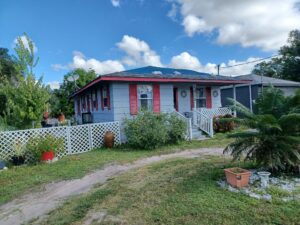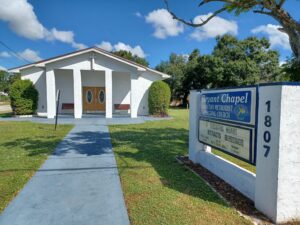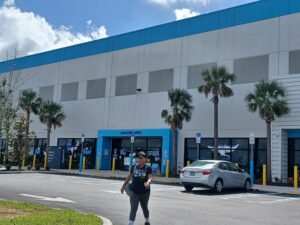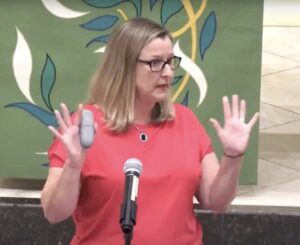WSLR produces a three-part report on how a grassroots group demands accountability from Lockheed Martin.
By Ramon Lopez
Original Air Date: October 10, 2025
Host: Tallevast, the historically African American community in South Manatee County, for decades has suffered the fallout from industrial soil and groundwater contamination. Ramon Lopez brings us the first of three parts of this story. He begins with the history.
 Ramon Lopez: Move over, Erin Brockovich. For over two decades, it has been David versus Goliath in Manatee County as three local women at tiny Tallevast take on mega defense contractor Lockheed Martin.
Ramon Lopez: Move over, Erin Brockovich. For over two decades, it has been David versus Goliath in Manatee County as three local women at tiny Tallevast take on mega defense contractor Lockheed Martin.
Remaining residents there are living on 200 acres contaminated by dioxane, arsenic and other dangerous contaminants generated by a now closed industrial plant.
They are engaged in a concerted effort to save their neighborhood as they seek to mitigate the life-threatening impact of the contamination. A non-profit called FOCUS—for Family-Oriented Community United Strong—is leading the charge.

The Bryant Chapel Christian Methodist Episcopal Church in Tallevast. Photos: Lopez
The League of Women Voters of Manatee County recently conducted a Zoom meeting on the history, actions taken and still significant contamination and cleanup ongoing in Tallevast.
Speakers included Laura Ward and Wanda Washington, the co-executive directors of FOCUS, and Jeanne Zokovitch Paben, a Sarasota environmental justice attorney. She has represented Tallevast residents through their decades of efforts to obtain relief and hold Lockheed Martin accountable.
 The disadvantaged African-American community is located in south Manatee County, just east of Sarasota Bradenton International Airport.
The disadvantaged African-American community is located in south Manatee County, just east of Sarasota Bradenton International Airport.
It stretches across seven streets dotted by thick oak trees and ranch-style homes with screened-in porches.
The town is named after Jeter Hollis Tallevast, a white South Carolina native, who migrated south to make his fortune.
Many of the 75 or so households still there include descendants of the town’s original founding families, black laborers who settled the area as turpentine workers after the Civil War. Cleared of pine trees, Tallevast grew as the turpentine camp there prospered. Three churches, a grocery store, a post office and a community center were built.
Turpentine production eventually ceased. And residents there suffered for lack of educational opportunities and government services under Florida’s Jim Crow regime.

Tallevast’s Amazon distribution center.
Enter the American Beryllium Company, or ABC.
It built a plant in the heart of the community. From the late 1950s until 1996, when Lockheed Martin acquired ABC, the plant fabricated beryllium machine parts, including components for nuclear warheads.
Over time, poor management of hazardous waste and discharges from ABC’s wastewater treatment system contaminated the local groundwater with chlorinated solvents, poisoning local drinking water wells.
Lockheed Martin put in place a remedial action plan for groundwater cleanup, estimated to take between 50 to 100 years to complete.
But Zokovitch-Paben says Tallevast contamination has continued to grow and expand by Lockheed Martin’s own admission beyond its cleanup ability. The Florida Department of Environmental Protection, or F-DEP, is overseeing the cleanup effort. But she says the company has resisted all directions from FDEP and pleas from the townfolk.

Jeanne Zokovich Paben
Jeanne Zokovitch-Paben: Lockheed has been not near as effective as they claimed that they would be with cleaning up the contamination. And with long term contamination comes other challenges. FOCUS definitely has to be engaged for the long haul to make sure that the community is safe and continues to be present in Manatee County.
RL: Meanwhile, research shows that last year’s trio of major hurricanes caused groundwater levels to rise nearly five feet. This has allowed the contamination to spread south onto a business property and onto land planned for housing.
This is Ramon Lopez for WSLR News.
WSLR News aims to keep the local community informed with our 1/2 hour local news show, quarterly newspaper and social media feeds. The local news broadcast airs on Wednesdays and Fridays at 6pm.